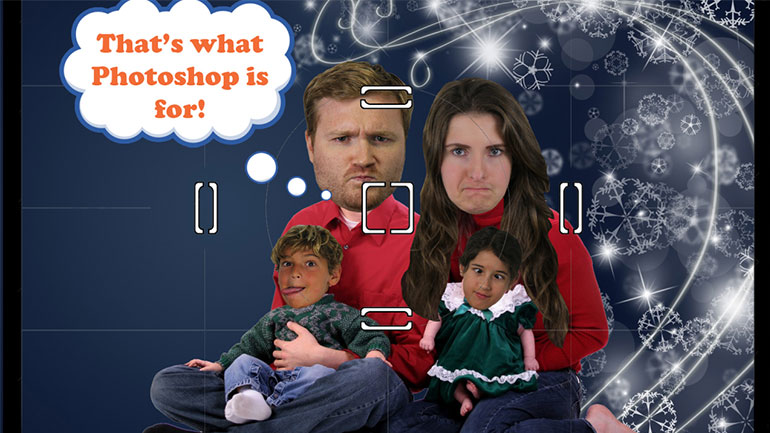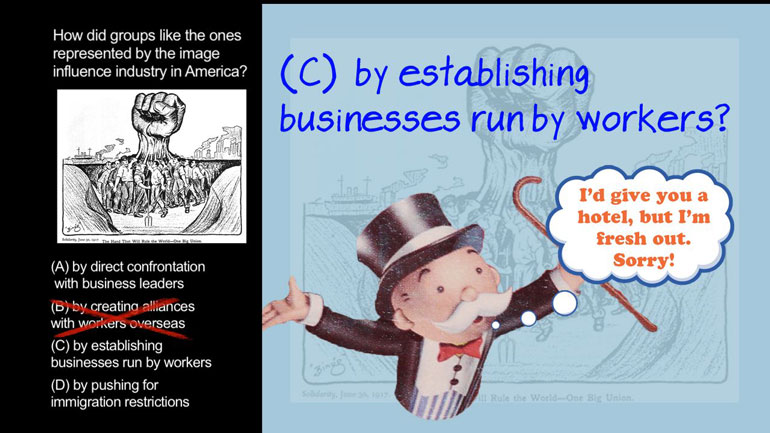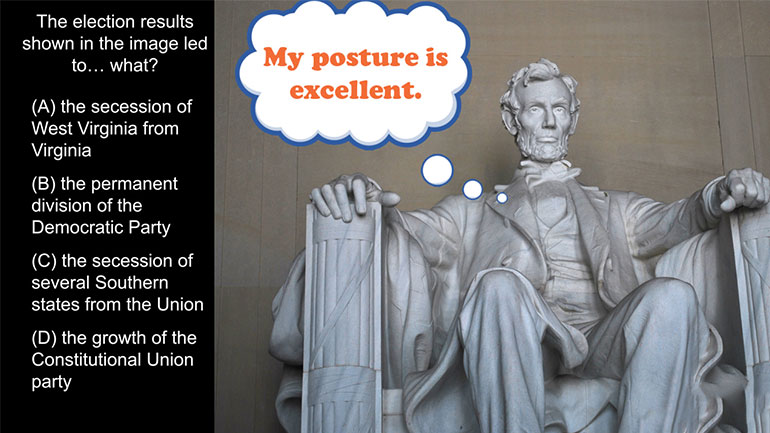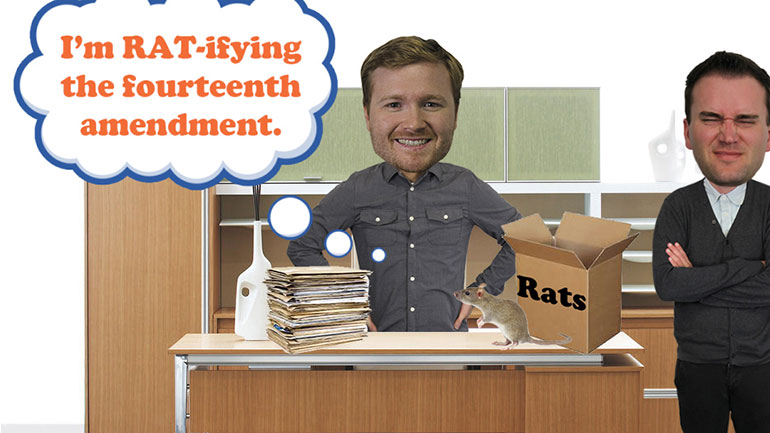ShmoopTube
Where Monty Python meets your 10th grade teacher.
Search Thousands of Shmoop Videos
AP U.S. History 3.3 Period 9: 1980-Present 7 Views
Share It!
Description:
AP U.S. History 3.3 Period 9: 1980-Present. The pattern depicted on the graph from 1980 to 1988 best serves as evidence to which of the following?
Transcript
- 00:00
And here's your shmoop du jour brought to you by Thanksgiving
- 00:07
where it tanks everywhere gather and reflect on you know what they're [Tanks appear]
- 00:11
grateful for that's right take a look at the graph right there a lot of blue burn
- 00:14
well now for the question stop pattern depicted on the graph from
- 00:17
1980 to 1988 best serves as evidence to which of the following and here is their
Full Transcript
- 00:23
answer pretty good all right Americans love their military it's right up there
- 00:29
with apple pie baseball and those flappy inflatable guys outside car dealerships [Soldier looking at flappy inflatable tube man]
- 00:33
and you know what they say if you truly love someone drop mad cash on them so
- 00:39
our question revolves around the chart right here
- 00:41
first things first we need to identify the pattern with the questions talking
- 00:44
about let's take a gander well from 1980 to 1988 the United States steadily
- 00:51
increased its military spending question into why well remember that old song [Military appear]
- 00:56
this is the war that never ends it just goes on and on my friends well that song
- 01:01
was based on the true story of the Vietnam War and though it felt like it [Soldier playing whack a mole]
- 01:04
lasted forever it actually ended in the early to mid 70s the Vietnam War was
- 01:10
long over by the 80s well let's put a big fat x over A next let's see what
- 01:14
we think about D it would make perfect sense for the government to follow up Mo
- 01:18
Money mo military philosophy after all it's easier today hit up the toy store [Soldiers enters Toy store]
- 01:22
with a big fat lot of cash in your wallet but first we have to ask
- 01:25
ourselves well was 1980-88 a period of rapid dramatic economic growth it turns
- 01:32
out and yes and no well though the eighties were times economic expansion [Buildings appear on street]
- 01:36
perhaps a better description for the growth would be steady yet sensible it's
- 01:40
definitely not President Reagan's main reason for making it rain on the [Military men appear and money falls]
- 01:43
military go again cut off D because there's just no no best joy now let's
- 01:48
take a look at the final two options remember the pattern on the chart shows
- 01:51
a steady increase in military spending and we're not sure that would be [Gorbachev and Raegan shaking hands]
- 01:54
necessary if Reagan and Gorbachev had a burgeoning alliance while military
- 01:59
spending generally reflect things like biron fortitude rather than friendship
- 02:03
but this budding bromance didn't develop until the later stages of the decade so [Gorbacev and Raegan speaking as neighbors]
- 02:08
put on some tinning music because that we're going to put Ziyi on hold which
- 02:12
leaves us would be the reinvigoration of anti-communist foreign policy while
- 02:17
considering Cold War politics continued throughout the 80s we can conclude that
- 02:21
America's anti-communist policies were in full force President Reagan beefed up [Captain America appears on golf course]
- 02:26
the military budget so the board did break out America could kick some
- 02:29
serious Russian booty in other words military strong anyway
- 02:35
that growth in military spending is seen on the chart corresponds to America's
- 02:38
anti-communist way so go ahead and be what you want to be now that that's done
- 02:43
with who can we contact about a Reagan Gorbachev bromance movie [Raegan and Gorbachev at a bromance movie]
Up Next
AP U.S. History Diagnostic 1. Relationships like the one shown in the image resulted in the development of...what?
Related Videos
AP U.S. History Diagnostic 15. How did groups like the ones represented by the image influence industry in America?
AP U.S. History Diagnostic 10. What led to the splintering of the political parties shown in the image?
AP U.S. History Diagnostic 11. The election results shown in the image led to...what?
AP U.S. History Diagnostic 12. How did the Reconstruction Acts open up political opportunities for former slaves?




